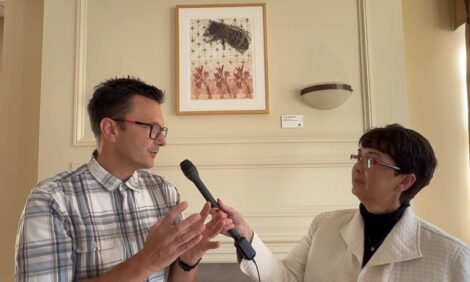



Dynamics of Salmonella Serotype Shifts in an Endemically Infected Dairy Herd
In cows from a typical dairy herd in the US, the prevalence of faecal shedding of Salmonella over the six-year study period ranged from eight per cent to 97 per cent, and most of them were shedding most of the time, according to researchers. Kentucky and Cerro were the main serotypes found on this farm.Salmonella is a leading cause of foodborne illness in the United States, according to Jo Ann Van Kessel of USDA-ARS, Beltsville, Maryland and co-authors there and at Pennsylvania State and Cornell universities. In a paper published recently in Foodborne Pathogens and Disease, the researchers explain that Salmonella is a zoonotic pathogen found in many species of food animals, and contamination of foodstuffs by strains of Salmonella found on farms is an important source of human exposure.
They describe a long-term (2004–2010) study of Salmonella colonisation on a typical dairy farm in the north–eastern United States. Faecal shedding prevalence in the herd ranged from eight per cent to 97 per cent, and greater than 50 per cent of the herd was shedding Salmonella for more than two–thirds of the study period.
Salmonella enterica serotype Cerro was first detected in September 2004, after a small and very short–lived outbreak of Salmonella Kentucky. Cerro persisted within the herd for over three years, with no clinical signs of salmonellosis in the animals.
In the winter of 2006, Kentucky was again detected within the herd, and over a two–year period, Kentucky gradually supplanted Cerro. Kentucky was the only serotype detected from March 2008 until September 2009, when Cerro was again detected in 15 per cent of the cows on the farm.
Since September 2009, Kentucky and Cerro have coexisted within the herd, which continues to harbour these serotypes at high prevalence.
Pulsed-field gel electrophoresis (PFGE) could not discern differences between Cerro strains isolated during this study but it did suggest that the strain of Kentucky that seemed to behave as a commensal in these dairy cows is distinct from the transient strain isolated in 2004.
Van Kessel and co-authors conclude that understanding the dynamics of competition between these two serotypes that seem to behave as commensal colonisers of dairy cows may provide insights into the mechanisms by which Salmonella establishes infection in the lower gut of dairy cows and may lead to the development of measures to prevent or limit Salmonella colonisation of dairy cows.
Reference
Van Kessel J.A.S., J.S. Karns, D.R. Wolfgang, E. Hovingh and Y.H. Schukken. 2012. Dynamics of Salmonella serotype shifts in an endemically infected dairy herd. Foodborne Pathogens and Disease. 9(4):319-324. doi:10.1089/fpd.2011.1054.
Further Reading
| - | You can view the full report (fee payable) by clicking here. |
May 2012


